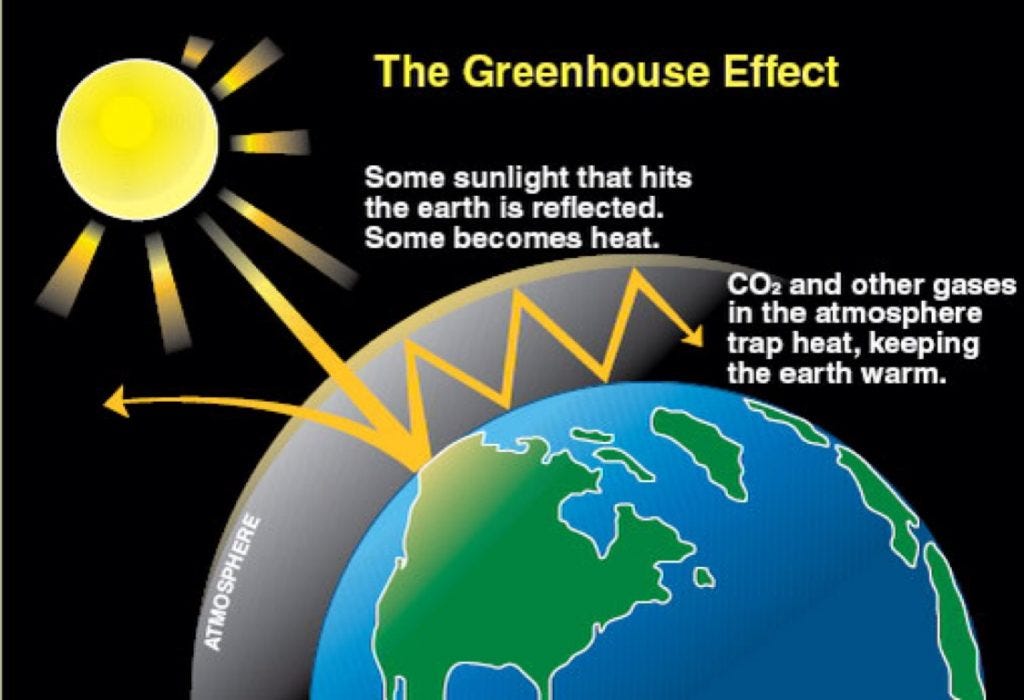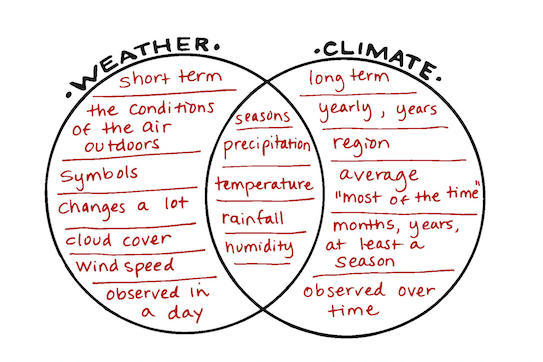So the other day I was on Mars and . . .
No, you were not.
I know, but I am using this as an example to explain. . .
Let me guess. Dragons or laser penguins or bacteria named Phil.
No. I am going to use my story to explain the greenhouse effect.
Oh. No dragons?
No dragons.
Well, then, I am all ears.
So the other day, I am on Mars near its equator. It is one of the hottest days on record, a scorching 20 degrees Celcius (70o F) – the highest temperature ever recorded on Mars is 86o F. However, when the sun sets, the temperature drops to minus 73o Celcius. So, why is there a vast temperature shift between day and night?
Is it because it is farther from the sun than Earth?
Mars’ distance from the sun is part of the temperature change, but the primary factor is the greenhouse effect.
What is the greenhouse effect?
The greenhouse effect is when a planet’s atmosphere can trap heat. Mars does not have a greenhouse effect, so it has extreme temperature shifts between night and day.
So, a planet’s ability to retain heat has a greater effect on its surface temperature than its distance from the sun?
In general, yes. For example, which is closer to the sun, Mercury or Venus?
Mercury.
Correct. Mercury’s average surface temperature is 167 degrees Celcius while Venus’ average surface temperature is 453 degrees Celcius.
Let me guess. Venus’ higher surface temperature is due to its greenhouse effect.
Bingo!!! Venus has an extreme greenhouse effect that traps a large portion of the sun’s heat, making its surface hot enough to melt lead.
Wow.
And FYI, bacteria is never named Phil. Phil is a laser penguin name.
You couldn’t resist, could you?
No, I could not. Sorry.

Weather and Climate are NOT the Same
Weather is the amount of precipitation, wind, and temperature on any given day. For example, today’s weather will have an average temperature of 46o F and zero precipitation. Yesterday’s average temperature was 52o F with 0.32 inches of rainfall. Therefore, the weather is in constant flux from day to day.
Climate is the average yearly temperature and precipitation. Our town has an average annual temperature of 64oF and gets a yearly rainfall of 22 inches and zero percent snowfall. Therefore, our climate is dryer than most of the United States (rainfall = 38 inches; snowfall = 28 inches) and warmer (U.S. average annual temperature = 54o F).

The Greenhouse Effect
Greenhouse gasses cause the greenhouse effect on Earth. The three primary greenhouse gasses are carbon dioxide, methane, and water vapor. Greenhouse gasses are very potent, and it only takes a small amount of these gasses to trap infrared energy (heat). For example, CO2 is the most significant greenhouse gas, but only 0.04% of the Earth’s atmosphere contains CO2.
Wait, only 0.04%? Did you misplace the decimal?
No, I did not. For example, let us look at some lethal toxins. The skin of newts and the harpoon of a cone snail contain tetrodotoxin, a deadly toxin that paralyzes the breathing muscles leading to suffocation. Botulinum is a bacterial toxin that causes muscle paralysis and suffocation too. However, the lethal human dose of tetrodotoxin is 8,000 ng/kg, while the lethal dose of botulinum is 0.03 ng/kg. Both toxins are lethal, but it takes a lot more tetrodotoxin to kill. CO2 is analogous to botulinum; it only takes a small amount to have a considerable effect on the climate.
The greenhouse effect is necessary for most life on Earth. (Specific single-celled organisms and tardigrades can survive on Earth without a greenhouse effect.) Without the greenhouse effect, the daily temperature fluctuations would be too extreme and the world’s climate would be too cold to support most life. The greenhouse effect keeps the average climate at a level good enough to keep most living species on this planet alive. However, if the greenhouse effect increases, the global climate changes, and extinction rates rise.
The Greenhouse Effect Breaking Bad
Humans were a nomadic species whose population was in the low millions for the first 185 thousand years of their existence. Fifteen thousand years ago, the Earth’s climate warmed, ending the last great ice age. However, it did not get too warm. The climate warmed to a temperature that allowed humans to settle down and invent agriculture, cities, and countries. Therefore, the climate is the main reason we went from stories around a fire to stories around a computer screen.

The Earth’s climate is in constant flux, which is why the Earth has seen many ice ages and ages without any ice at all. The changing climate is usually a gradual process, only changing rapidly during rare events such as an asteroid hitting the Earth’s surface or the eruption of a supervolcano. Rapid climate change has always occurred due to natural disasters or extraterrestrial origins (asteroids, not aliens). For the first time in Earth’s history, a species is a primary driver behind rapid climate change. And that species is dragons.
I’m not in the mood.
That species is laser. . .

Point taken. That species is humans.
Over the past two centuries, the amount of atmospheric CO2 has risen by 47% and the global temperature by 1o C. One degree may not seem like a lot, but it has been enough to cause the migration of millions of humans due to rising sea levels. In fact, a 0.5o C increase in global temperature will be most of the industrial park and first street underwater.
